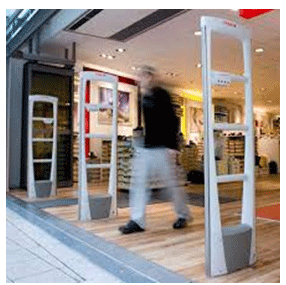 There seems to be an advice website or YouTube video for nearly everything these days. Want to know who to call for home repairs? Need information about a car before you buy it? Looking for someone to date? Yes, it’s all on the internet, I’ve even completed some plumbing repairs and small vehicle repairs with the aid of online videos. Unfortunately, while there is a lot of help and good information on the world wide web, there are also sites that purport to be “informational” only but the information they provide supposedly tells people how to shoplift. What I find even more irritating is that some of these theft websites allegedly are written by former Loss Prevention personnel. The information they give is sometimes too accurate and could cause problems for a retailer who isn’t informed themselves on how to prevent thieves from stealing from them.
There seems to be an advice website or YouTube video for nearly everything these days. Want to know who to call for home repairs? Need information about a car before you buy it? Looking for someone to date? Yes, it’s all on the internet, I’ve even completed some plumbing repairs and small vehicle repairs with the aid of online videos. Unfortunately, while there is a lot of help and good information on the world wide web, there are also sites that purport to be “informational” only but the information they provide supposedly tells people how to shoplift. What I find even more irritating is that some of these theft websites allegedly are written by former Loss Prevention personnel. The information they give is sometimes too accurate and could cause problems for a retailer who isn’t informed themselves on how to prevent thieves from stealing from them.
Here is some ‘information’ that is published on the web and our advice can help you fight back against these shoplifter websites.
- Website: Carry money with you, no money makes it hard to say it was spontaneous.
Loss Prevention Systems Inc. (LPSI) Advice: It makes no difference if the shoplifter has or does not have money. Treat all shoplifters the same and be consistent in prosecuting within whatever your policies say. - Website: Carry a bag but don’t place anything in it. It may get you off the hook if they can’t find anything in it.
LPSI Advice: Store Loss Prevention or Managers should never be stopping a suspect if they don’t know where the concealment took place and what was concealed. If you don’t know and didn’t see it, smother them with extensive customer service. - Website: Security does not go looking for poorly dressed people. They may pick on you out of boredom but they anticipate professional shoplifters will dress up a bit. Wear whatever you want.
LPSI Advice: Loss Prevention professionals who do the job right look for signals that may indicate someone is going to shoplift and the types of clothes worn. Are the clothes unseasonable? Is the person wearing a bulky coat when it’s warm outside? Is the person in a known high theft area? Does the person avoid customer service from employees? - Website: If you get caught don’t act tough or be a smart “arse” (sic), cry, bawl, beg them not to call the cops, that your kids will be taken by CSV (child services).
LPSI Advice: Always be consistent. Don’t play favorites and don’t do “favors”. Not applying the rules equally to everyone can actually get you into legal hot water. If there are children with the shoplifter there is nothing wrong with allowing them to call a family member or close, trusted friend to pick up the children. Often shoplifters who have no record of shoplifting have been caught before they were just released and not prosecuted. See how that works? - Website: Look for younger, or less ‘affluent’ associates who may turn a blind eye if they see you shoplifting.
LPSI Advice: Train ALL of your associates on the importance of customer service and the necessity to report all suspicious activity. Perhaps initiate a reward program for employees who can demonstrate they have prevented a theft. This may be done if they can show clothes with torn off tags or an anti-theft device that was being tampered with and the associate walked up and disrupted the thief. Maybe it’s a fitting room attendant who finds merchandise hidden that a shoplifter was going to try to take into the fitting room. Age of an employee should never be a factor. - Website: Most employees at places with EAS (electronic article surveillance) door alarms (towers) view them as an annoyance instead of as an asset. If someone does respond to an alarm they are usually only allowed to ask you if you “forgot to pay for something”. They cannot threaten to call the police. There was no evidence.
LPSI Advice: Ensure all associates are trained on appropriate EAS alarm response. Waving goodbye or saying, “It’s okay” is not appropriate. Employees should be asking politely for receipts and then looking for dates, time stamps, and verifying the items on the receipt are the items being carried out. If a discrepancy is found a manager should be called over. If nothing is found in bags or in the shopping cart, there are additional steps to take in order to determine the cause of an alarm.
Loss Prevention Systems provides training for managers and staff on preventing shoplifting. You can contact LPSI for information on how to approach an EAS/Checkpoint system alarm. These are simply a few tips on how to overcome the tips from these “informational” websites. Don’t be a victim to shoplifters. You can prevent theft, reduce your shortage and increase profits. Proper training for you and your managers can pay big dividends regardless of what criminals may read on the world wide web.
 Shortage control and theft prevention for small retailers which have no Loss Prevention Associates in the store was the topic of a recent article in an online loss prevention magazine. The points were well made and much of it was directed at stores that may have district or regional Loss Prevention Managers. But the truth is there are many small, independent retailers with no affiliation to a larger company. How do these stores cope with reducing shrink and preventing theft? It could be a tough problem but Loss Prevention Systems Inc. (LPSI)has the solutions that can keep small stores keep shortage down and profits up.
Shortage control and theft prevention for small retailers which have no Loss Prevention Associates in the store was the topic of a recent article in an online loss prevention magazine. The points were well made and much of it was directed at stores that may have district or regional Loss Prevention Managers. But the truth is there are many small, independent retailers with no affiliation to a larger company. How do these stores cope with reducing shrink and preventing theft? It could be a tough problem but Loss Prevention Systems Inc. (LPSI)has the solutions that can keep small stores keep shortage down and profits up. In some regions, police departments warn retail stores and home owners of an increase in shoplifting and burglaries during the summer months.
In some regions, police departments warn retail stores and home owners of an increase in shoplifting and burglaries during the summer months.
 The National Association for Shoplifting Prevention studies have shown that there is not a profile for a typical shoplifter.
The National Association for Shoplifting Prevention studies have shown that there is not a profile for a typical shoplifter.
 mbat and punish shoplifting and employee theft.
mbat and punish shoplifting and employee theft. Would you knowingly buy a car with a defective engine? Of course not! So why would you hire a “defective employee”?
Would you knowingly buy a car with a defective engine? Of course not! So why would you hire a “defective employee”? When do closed circuit television malfunctions occur? I’m sure you can guess, it is always at the point when you need it most. I can’t recall the number of instances when I had a cash shortage I needed to look for and when I attempted to pull video through the DVR the video was already dropped or the camera wasn’t functioning. I remember having to look for an image of a suspect in a shoplifting incident and the picture was too grainy to be of any use due to a dirty camera lens or dome. One slightly embarrassing situation that stands out in my mind involved robberies that were taking place behind our store. I had developed a great working relationship with our local police department and they knew the quality of our camera system. Investigators came to me seeking assistance with outdoor camera footage to try to identify the criminals conducting the robberies. I pulled up video of the date and time in question and much to my chagrin the camera had a great shot of the ground directly underneath it. A power surge had impacted the programming of the pan/tilt/zoom (PTZ) camera and placed it in a default position. I had not noticed the problem in a timely fashion and could not recall how long it was before I did catch the issue. The good news was I was able to re-program the camera and eventually we did provide footage of an incident a little later that led to an arrest.
When do closed circuit television malfunctions occur? I’m sure you can guess, it is always at the point when you need it most. I can’t recall the number of instances when I had a cash shortage I needed to look for and when I attempted to pull video through the DVR the video was already dropped or the camera wasn’t functioning. I remember having to look for an image of a suspect in a shoplifting incident and the picture was too grainy to be of any use due to a dirty camera lens or dome. One slightly embarrassing situation that stands out in my mind involved robberies that were taking place behind our store. I had developed a great working relationship with our local police department and they knew the quality of our camera system. Investigators came to me seeking assistance with outdoor camera footage to try to identify the criminals conducting the robberies. I pulled up video of the date and time in question and much to my chagrin the camera had a great shot of the ground directly underneath it. A power surge had impacted the programming of the pan/tilt/zoom (PTZ) camera and placed it in a default position. I had not noticed the problem in a timely fashion and could not recall how long it was before I did catch the issue. The good news was I was able to re-program the camera and eventually we did provide footage of an incident a little later that led to an arrest.